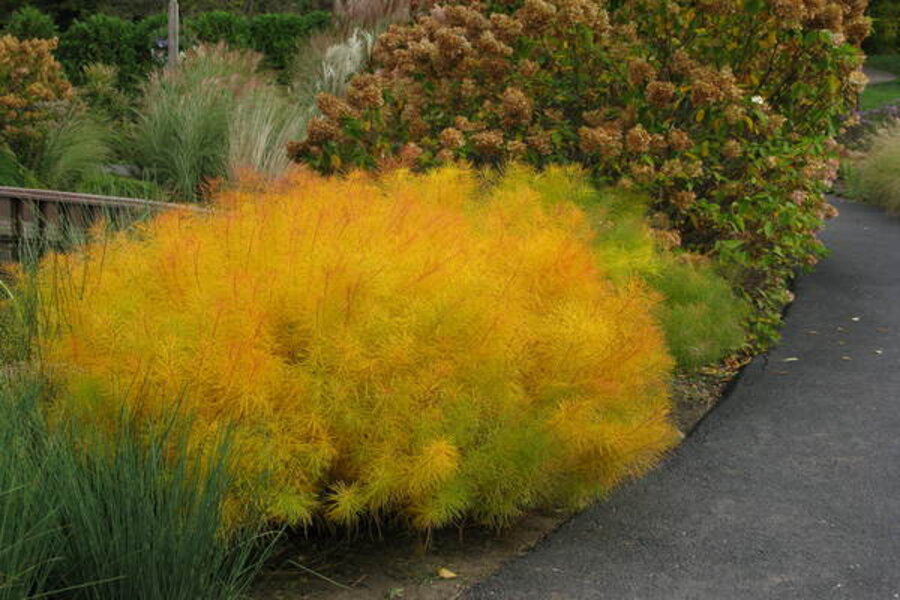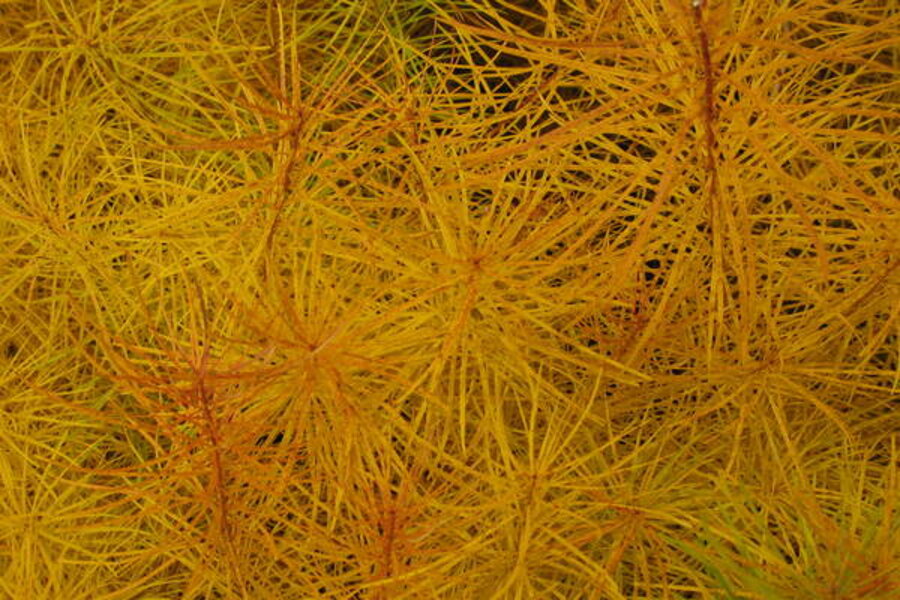Arkansas blue star: A winner worth growing
Loading...
Arkansas (or threadleaf) blue star (Amsonia hubrichtii), the Perennial Plant Association’s Perennial Plant of the Year for 2011, is a graceful and long-lived native plant. It's known for its fine foliage, clusters of steel-blue flowers, and incredible fall color.
There are plants that scream for attention with the first hello. Others, like some skilled magicians, patiently wait for the audience to cast its attention elsewhere before jumping out of the top hat to a glorious ... taah-daah!
In my neck of the woods, that cuddly bunny is Arkansas blue star. Throughout the hot summer days, it blends inconspicuously into the landscape. But come fall, it gussies up in a stunning shade of glamorous golden-yellow foliage that knocks your socks off at first sight.
A plant with many excellent qualities
And strong color wed with a graceful form is nothing short of a winning combination.
In general, blue stars deserve greater respect – and a much wider audience. They may not be the glamorous, celebrated, and well-known divas of the garden; but they flower reliably year after year, are neither pushy nor invasive, they rarely fuss about soil or light requirements, and they are hardy.
They need no staking, no deadheading, no pinching, and are susceptible to few, if any, pests or diseases.
So, though the elegantly arching Amsonias will never be the summer show-stoppers that, say, a sensuous rose could be, but what more could you ask for in a plant?
A good landscaping choice
Arkansas blue star is a rather recent addition to the garden palette of blue stars. Although discovered in l942 in the mountains of Arkansas and Oklahoma, as recently as a decade or so ago, this truly extraordinary plant was regarded as a rather obscure find treasured only by collectors.
Today, it's every gardener’s dream.
The foliage of Arkansas blue star consists of very narrow, needlelike leaves that line the stems like so many bottle brushes, but are so soft-textured as to appear cloudlike.
Mature plants add a billowy, finely textured element to the landscape, growing into a broad-spreading dense mass much like a small shrub. The four-foot-tall graceful branches arch outward from the crown and, on mature plants, spread to a width of approximately 50 inches.
In spring, the short mounds of ferny foliage are topped by a multitude of small, pale, sky-blue, star-shaped flowers that turn almost white as temperatures creep upward, lasting two to three weeks on average.
Some reputable literature tells me that if you were to cut the plant back to 6 to 8 inches after blooming, it results in a bushier plant. But as I have never tried this, I can’t speak for the results.
Summer foliage is a rich medium green, providing an interesting textural contrast for most other plants. When grown in strong sunlight, the peak season for this plant is autumn, when the stems and leaves turn that vibrant butter-yellow that endures for a month or more.
This graceful plant is cold-hardy to USDA Zone 4 and is unfazed by the extremes of summer’s heat or drought. Arkansas blue star thrives in a wide range of soils from sand to clay, in full sun or part shade and in both alkaline and acidic conditions.
Arkansas blue star, like other members of Amsonia, belongs to the dogbane family along with Vinca minor and the common periwinkle (Catharanthus roseus).
Like many members of that family, it has a milky sap. A small segment of the population is said to be allergic to the sap, so I suggest you wear gloves when working with the plant. But the upside of this sap is that deer detest it, always a plus in my book.
Finally, Arkansas blue star is getting the recognition it deserves: The Perennial Plant Association has declared Amsonia hubrichtii to be one tough perennial that will give your garden a fantastic show all season long, year after year, by naming it the Perennial Plant of the Year for 2011.
Betty Earl, the Intrepid Gardener, is one of nine garden writers who blog regularly at Diggin' It. She's the author of “In Search of Great Plants: The Insider’s Guide to the Best Plants in the Midwest.” She also writes a regular column for Chicagoland Gardening Magazine and The Kankakee Journal and numerous articles for Small Gardens Magazine, American Nurseryman, Nature’s Garden, and Midwest Living Magazine, as well as other national magazines. She is a garden scout for Better Homes and Gardens and a regional representative for The Garden Conservancy. To read more by Betty, click here.






